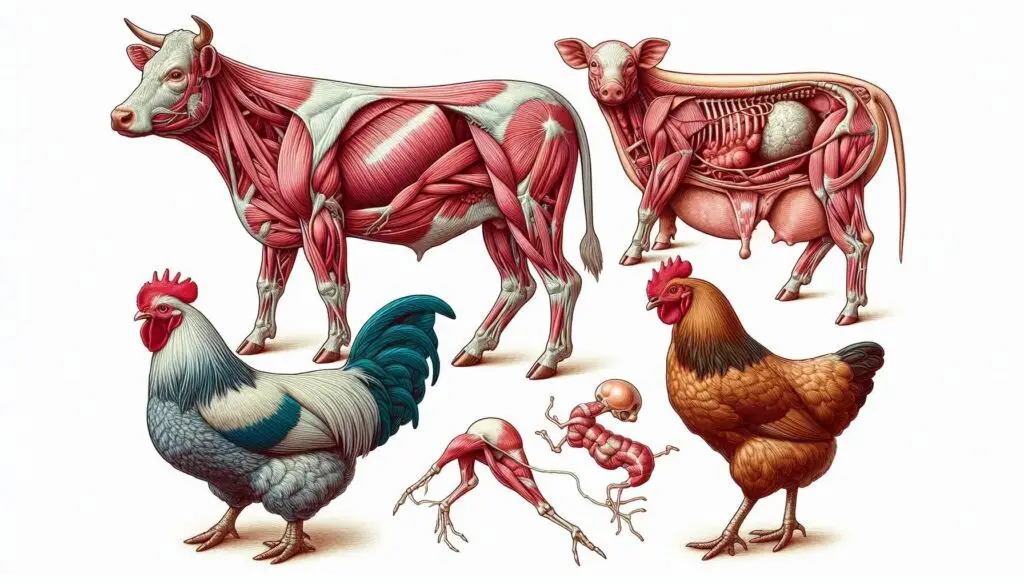Gynaecological disorders found in livestock which can lead to infertility

Gynaecological disorders in livestock can significantly impact fertility, leading to reduced productivity and economic losses. Understanding these disorders, their causes, and effective management strategies is crucial for maintaining healthy livestock. This article explores common gynaecological disorders in cattle and sheep and discusses the latest advancements in diagnosis and treatment.
Major Gynaecological Disorders in Livestock
1. Anestrus
Anestrus refers to the absence of estrus cycles. Hormonal imbalances or inadequate nutrition often cause this condition. It ranks among the most common reproductive problems in dairy cattle and contributes to infertility.
2. Repeat Breeding (RB)
Repeat breeding occurs when a female fails to conceive after multiple breeding attempts. Factors such as poor semen quality, uterine infections, and hormonal issues often contribute to this problem.
3. Retention of Fetal Membranes (RFM)
Retention of fetal membranes happens when the placenta fails to expel after parturition. This condition can lead to infections and subsequent fertility issues. RFM often results from poor management practices and nutritional deficiencies.
4. Endometritis
Endometritis is an infection of the uterine lining. It can arise from retained fetal membranes or other infections. This condition can cause inflammation and scarring, negatively affecting fertility.
5. Pyometra
Pyometra is a serious uterine infection that can lead to severe reproductive issues, including infertility. Hormonal imbalances often trigger this condition, and it may require surgical intervention.
6. Ovarian Cysts
Ovarian cysts are fluid-filled sacs on the ovaries. They can disrupt normal hormonal function and ovulation, leading to infertility. Dairy cattle frequently experience ovarian cysts, which veterinarians can diagnose using ultrasound.
7. Dystocia
Dystocia refers to difficulties during calving. It can cause physical trauma to the reproductive tract, resulting in long-term fertility issues. Factors such as fetal size and position often contribute to dystocia.
8. Salpingitis
Salpingitis is the inflammation of the oviducts. This condition can lead to blockages that prevent the passage of eggs and sperm, directly affecting fertility. Veterinarians often find it challenging to diagnose salpingitis due to the difficulty in assessing the oviducts.
9. Hypofunction of Ovaries
Hypofunction of the ovaries refers to insufficient hormone production. This condition can lead to irregular or absent estrous cycles, resulting in infertility.
10. Chronic Endometritis
Chronic endometritis is a long-term inflammation of the uterine lining. It can lead to scarring and infertility. Bacterial infections often cause this condition, which can worsen due to poor management practices.
Diagnosis and Treatment
Accurate diagnosis plays a crucial role in managing gynaecological disorders in livestock. Veterinarians use various diagnostic techniques, such as rectal palpation, ultrasonography, and laboratory tests, to identify the underlying causes of infertility.
Diagnostic Techniques
- Rectal Palpation: This method assesses the reproductive organs but has limitations in detecting early-stage diseases or conditions affecting the oviducts and paraovarian structures.
- Ultrasonography: This increasingly valuable tool allows veterinarians to visualize ovarian structures and detect cysts, follicular development, and other abnormalities.
- Laboratory Tests: Hormone assays and bacteriological examinations provide additional information to support diagnosis and guide treatment decisions. For example, progesterone assays can identify ovarian dysfunction, while bacteriological cultures can detect uterine infections.
Treatment Approaches
Treatment varies depending on the specific disorder and its severity. In some cases, veterinarians may use hormonal therapy to regulate the estrous cycle and stimulate ovulation. Antibiotics often treat uterine infections, while surgical interventions may be necessary for conditions like ovarian cysts or pyometra.
Management Strategies for Improving Reproductive Efficiency
Implementing effective management strategies is crucial for preventing and controlling gynaecological disorders in livestock. Here are some key strategies:
1. Proper Nutrition
Ensure a balanced diet that meets the nutritional requirements of livestock. This practice helps maintain reproductive health and prevents deficiencies that may contribute to infertility.
2. Herd Health Monitoring
Regular veterinary check-ups, disease screening, and vaccination programs help identify and prevent reproductive issues before they escalate.
3. Breeding Management
Implement a well-planned breeding program that includes the use of high-quality semen and proper breeding techniques. This approach can improve conception rates and reduce the incidence of repeat breeding.
4. Calving Management
Provide proper care during calving. Timely detection and management of dystocia can minimize the risk of reproductive tract injuries and subsequent fertility problems.
5. Postpartum Management
Monitor cows closely after calving. Ensure timely uterine involution and promptly treat any postpartum complications to prevent conditions like endometritis and pyometra.
6. Biosecurity Measures
Implement strict biosecurity protocols. Quarantining new animals and practicing good hygiene can help prevent the introduction and spread of infectious diseases that may affect reproductive performance.
Conclusion
Gynaecological disorders in livestock pose significant concerns for reproductive health and productivity. Farmers can enhance fertility in livestock populations by adopting effective management practices, including proper nutrition, timely veterinary interventions, and improved breeding techniques. Understanding these disorders and staying updated on the latest advancements in diagnosis and treatment is essential for improving reproductive outcomes and ensuring the sustainability of livestock farming. This revised article reduces passive voice usage and shortens sentence length, improving readability while retaining the essential information.
For more pearls of Vets Wisdom:





Responses